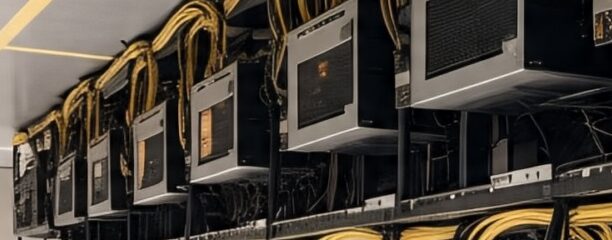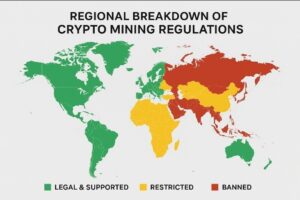
How Does It Work ? A mining pool changes those odds dramatically by combining the computational power of thousands of miners into one coordinated effort. This collaborative approach has transformed cryptocurrency mining from a solo venture into a team sport.
What Is a Mining Pool and How Does It Work?
A mining pool is a network of cryptocurrency miners who combine their computing resources to increase their chances of successfully mining blocks and earning rewards. Think of it as a group of treasure hunters pooling their metal detectors to cover more ground faster.
Individual miners connect their mining hardware to the pool’s server through specialized software. The pool coordinates the mining efforts by distributing work assignments to each participant. When any miner in the pool successfully mines a block, the rewards are shared among all participants based on their contributed computing power.
The concept emerged in 2010 when a BitcoinTalk forum user named Slush recognized the growing difficulty of solo mining. He founded “Slush Pool” on November 27, 2010, creating the first successful mining pool that allowed smaller miners to compete with increasingly powerful operations. This innovation democratized mining by making it accessible to individuals who couldn’t afford massive mining farms.
How Mining Pools Distribute Work and Rewards
Mining pools operate through sophisticated algorithms that manage work distribution and reward calculations. The pool’s software breaks down the complex mining problem into smaller, manageable pieces called “shares”. Each miner receives these shares based on their hardware capabilities.
Miners submit completed shares back to the pool as proof of their work contribution. The pool tracks these submissions meticulously, recording each miner’s contribution percentage. When the pool successfully mines a block, the reward distribution happens automatically through one of several payout schemes:
Pay-Per-Share (PPS) provides immediate payment for each valid share submitted, regardless of whether the pool finds a block. This offers predictable income but typically includes higher pool fees. Full-Pay-Per-Share (FPPS) and Pay-Per-Share-Plus (PPS+) extend this model by including transaction fee rewards in the payout calculation.
Pay-Per-Last-N-Shares (PPLNS) calculates rewards based on shares submitted during a specific window before block discovery. This method rewards loyal miners who maintain consistent connections but can result in lost contributions if you disconnect between blocks.
The Economics of Pool Mining vs Solo Mining
Solo mining in today’s cryptocurrency landscape requires massive investments in specialized ASIC hardware, cooling systems, and electricity. A single Bitcoin mining operation might need hundreds of thousands of dollars in equipment to compete effectively.
Mining pools dramatically reduce these barriers to entry. Participants can start with modest hardware investments and still earn proportional rewards. Pool mining transforms an all-or-nothing gamble into a steady income stream, albeit with smaller individual payouts.
The mathematics favor pooled mining for most participants. While solo miners might wait years between block discoveries, pool participants receive regular payouts based on their contribution percentage. A miner contributing 0.1% of a pool’s total hash power receives 0.1% of every block reward the pool earns.
However, pools typically charge fees ranging from 1% to 3% of earnings. These fees fund pool operations, server maintenance, and development costs. Despite these fees, the increased probability of earning rewards makes pool participation more profitable for most miners.
Choosing the Right Mining Pool Strategy
Selecting an appropriate mining pool requires evaluating multiple factors beyond just pool size. Transparency in operations, fee structures, and payout reliability form the foundation of a trustworthy pool.
Geographic location matters for latency considerations. Connecting to pools with servers near your mining operation reduces communication delays and rejected shares. Pools with multiple server locations offer redundancy and better global accessibility.
Pool size presents a strategic trade-off. Larger pools find blocks more frequently, providing steadier income streams. However, individual reward shares decrease as more miners join. Medium-sized pools often strike the optimal balance between regular payouts and meaningful reward percentages.
Consider the pool’s reputation and track record carefully. Established pools with years of reliable operations demonstrate stability and trustworthiness. Research user experiences, payout histories, and any past security incidents before committing your mining power.
The Impact on Cryptocurrency Decentralization
The concentration of mining power in major pools raises important questions about cryptocurrency decentralization. Currently, about ten to fifteen major pools control the majority of Bitcoin’s network hash rate.
This consolidation creates theoretical vulnerabilities. If a single pool controlled over 51% of the network’s mining power, it could potentially manipulate transaction confirmations. However, the distributed nature of pool participants provides a safeguard – miners can quickly switch pools if concerning behaviors emerge.
The mining pool ecosystem continues evolving to address centralization concerns. Peer-to-peer mining pools attempt to eliminate central points of control by implementing decentralized pool structures. These innovations aim to preserve the collaborative benefits of pooled mining while maintaining the decentralized ethos of cryptocurrency.
Despite centralization concerns, mining pools have democratized cryptocurrency mining. They’ve enabled millions of individuals worldwide to participate in securing blockchain networks and earning rewards. Without mining pools, cryptocurrency mining would be dominated exclusively by massive corporate operations.
Mining pools represent a practical compromise between ideal decentralization and economic reality. They provide accessible entry points for new miners while maintaining sufficient network distribution to preserve security and integrity. Now you you know how crypto mining pool work, let’s explore miners.

